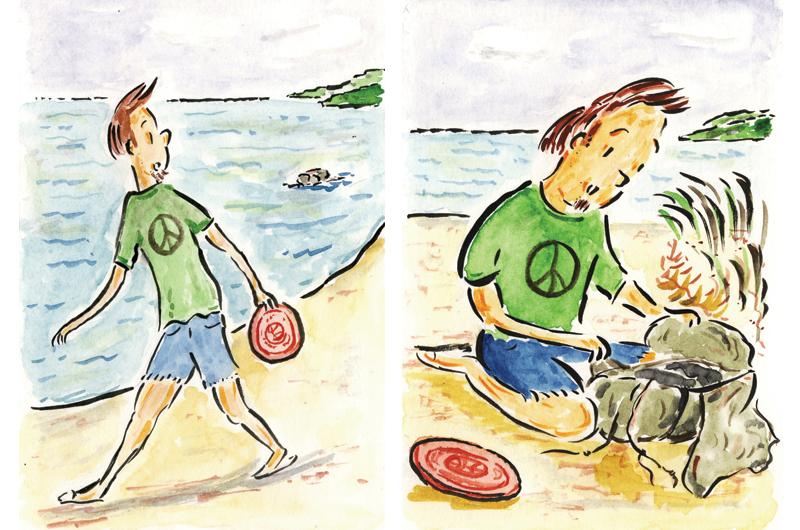I know a guy, who knows a guy, who knew the guy who on one sunny day, on a beach on the Vineyard, found a washed-up bale of hashish. Or was it pot? Or was it a gal?
Our Island is a storied place. The stories circulate among the various cliques that abound here. These groups aren’t exactly closed, but there is vetting. You can’t just go into Conroy’s Apothecary, for instance, early in the morning and start asking the locals who gather there questions about other locals and expect to get more than a chilly response. We tend to protect our own, because, as the saying goes, “It’s a small island, it’s a long life.” But within the cliques, amongst the vetted, the stories abound.
So it is with the story of the guy, or gal, that found the bale of hash. One day, sitting on the beach, he/she noticed a strange shape floating toward the shore. After a while of patiently waiting, it washed ashore and was surveyed and found to be a large chunk of hash, which of course could be transmuted into a large chunk of cash.

I could go on to tell the story of how that transmutation took place: how the guy/gal went to a nearby city, ran into some nefarious characters, and walked away with a grub stake to get going on the Island. But there is more to the story than that. How did the bale get there in the first place? Clearly, it had been dumped off a boat, probably by some smugglers who thought the jig was up. That is the bigger story. Islands, even our own, have long been used as transfer points for illegal items. If you are on the inside, you could hear the stories of the many now-prominent business people here who at one time did a lot of sailing and used the docks of, sorry, can’t say, in the depth of winter to offload goods that were, well, illegal. Fully vetted, you could hear of how these people made their own grub stakes to pursue more legitimate methods of making a living.
The fact is, many of us are proud of these folks. Happy that they found small fortunes to help them along. Not only is smuggling a tradition on many islands, so, too, is the code of silence. We are connected to other islands as well in this regard. I have come across evidence of this in some of my own forays as a sailor. The first time I went offshore, I sailed from the Vineyard with a cruising family on a smallish boat, the captain of which I found out later was known far and wide by the nickname...sorry, can’t say. We arrived in Bermuda and he introduced me to another skipper whose name was...sorry, can’t say. I then proceeded with the second captain to Antigua, where, strangely, as we were gliding along a cliffed coastline, he removed the radar reflector from the mast and said to me, “Skippy, when I tell you turn her hard over, turn her hard over.”
That was it. I saw nothing but cliffs, but he gave the order and I followed instructions, thinking we were going to crash. Sure enough, there was a cut and through it there was a harbor...hmmm, made me wonder.
A few years later I was cooking on a tall ship in the Marshall Islands in the Central Pacific and we visited one of the more remote atolls there, which is like saying we visited the moon, and I ran into a guy who was working on a giant clam farm by the name of...sorry, can’t say. Anyway, as it turned out, he knew both the skippers previously mentioned, as well as a bunch of the sailors I had met on the Vineyard. Go figure. It didn’t take me long to figure out that this guy was on the lam, and that he knew a guy who knew a guy that – well, you know what I mean.
So, the story of the bale is a good one, a couple of people hanging out on a beach reap the profits of a smuggler’s loss. It gives us Island beach-goers hope that we may reap a similar reward. What beach was it you may ask? Sorry, can’t say.




 1 comment
1 comment
Comments (1)